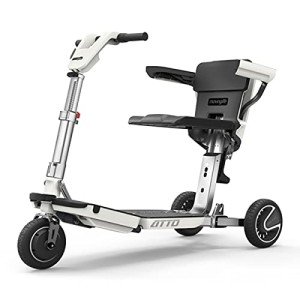8 Tips To Improve Your Mobility Aids Game
Understanding Mobility Aids: Enhancing Independence and Quality of Life
As society continues to age and individuals progressively look for ways to keep self-reliance, the demand for mobility aids has actually never been more important. Mobility aids, which include a variety of devices developed to help people with strolling or moving around, play a vital role in promoting mobility, enhancing security, and enhancing total quality of life. This blog site post will explore the various types of mobility aids, their advantages, considerations for choice, and address some often asked questions.
Types of Mobility Aids
Various mobility aids are available, each designed to resolve particular requirements. The following table summarizes a few of the most common kinds of mobility aids and their features.
Type of Mobility Aid
Description
Best Suited For
Key Features
Walking sticks
A handheld stick offering support and balance.
People who require minimal support.
Light-weight, portable, adjustable height.
Walkers
Four-legged frames offering stability.
Those requiring significant support while walking.
Foldable, some with wheels, included safety features.
Rollators
Wheeled walkers with a seat for resting.
Individuals requiring mobility with the alternative to rest.
Brakes, baskets for personal items, adjustable height.
Wheelchairs
Chairs with wheels for people with restricted mobility.
Those unable to stroll or needing substantial support.
Handbook or powered options, adjustable seating.
Scooters
Motorized devices for bigger ranges.
People with restricted stamina however requiring self-reliance.
Various sizes and styles, frequently transportable.
Crutches
Support devices positioned under the arms or lower arms.
Individuals recovering from lower limb injuries.
Adjustable, lightweight, needs upper body strength.
Stairlifts
Mechanical devices for moving in between floors.
Users facing obstacles in multi-level homes.
Personalized for different staircases, automated.
Benefits of Mobility Aids
Mobility aids offer a variety of advantages that can substantially boost the lives of individuals dealing with mobility difficulties. Some notable advantages include:
Increased Independence: Mobility aids empower people to move freely without counting on other s for support, therefore improving their confidence and self-confidence.
Improved Safety: Using mobility aids can minimize the risk of falls and injuries, especially for older adults or those with balance problems.
Enhanced Quality of Life: By helping with mobility, individuals can take part in social activities, attend occasions, and delight in life more totally, contributing to much better emotional and mental health.
Rehabilitation Support: After surgical treatment or injury, mobility aids supply required assistance and stability, aiding in healing and rehab processes.
Ease of access: Many mobility aids are developed to be used both inside your home and outdoors, ensuring that people can navigate different environments with ease.
Elements to Consider When Choosing Mobility Aids
Selecting the proper mobility aid requires mindful consideration of several factors, including:
Factor
Factors to consider
User's Needs
Assess the level of mobility needed; think about whether the user needs short-lived or long-term help.
Physical Limitations
Examine the user's strength, balance, and coordination to determine the best kind of help.
Setting
Consider the main environments where the help will be used, such as home, outdoors, or particular terrains.
Weight and Portability
Guarantee that the picked device is workable relating to mobility and storage, particularly for outdoor use.
Spending plan
Mobility aids been available in a series of costs; consider insurance protection and offered financing alternatives.
Adjustability
Choose aids that can be changed for height and convenience to accommodate development or altering needs.
Regularly Asked Questions About Mobility Aids
1. How do I know if I need a mobility help?
Many elements can signify the requirement for a mobility help, such as trouble strolling or balancing, tiredness while standing, or a recent surgical treatment affecting mobility. Consulting with a health care professional can offer guidance customized to individual needs.
2. What types of mobility aids are covered by insurance?
Protection differs in between insurers, but many offer options for resilient medical equipment, which typically includes wheelchairs, walkers, and some kinds of walking sticks. Examine with your insurance coverage company for specific coverage info.
3. Can mobility aids be used outdoors?
Yes, many modern mobility aids are developed for outdoor usage. Rollators, scooters, and some walkers are equipped with features for stability and ease of use on various terrain.
4. How do I preserve my mobility help?
Routine upkeep involves looking for any wear and tear, guaranteeing that parts such as wheels, brakes, and frames are working properly, and cleaning up the equipment as required. Following the manufacturer's guidelines is important for security.
5. Is there a risk of becoming based on mobility aids?
While some users might end up being reliant on mobility aids, they are designed to promote self-reliance and mobility. Gradually utilizing a mobility aid can improve confidence and assistance maintain physical strength and coordination.
Mobility aids are vital tools that empower people to overcome physical challenges, promoting self-reliance and enhancing quality of life. By understanding the different kinds of mobility aids offered, their advantages, and important elements for consideration, households and caregivers can make informed decisions that best satisfy the needs of their enjoyed ones. With the right support, those with mobility challenges can lead fulfilling and active lives, complimentary to explore the world around them.
